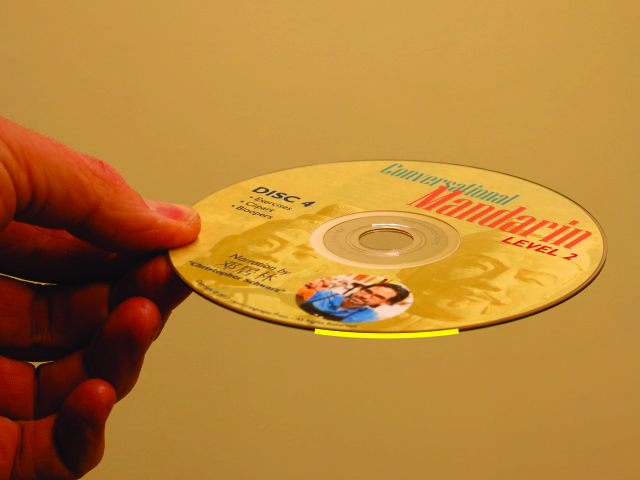I was flattening some panels by hand the other day (too wide for my machines), and that got me thinking about plane blade camber. If you search online for discussions of blade camber, you’ll find that a great many electrons have been spilled on the topic. One common thread in these discussions is frequent confusion over the fact that a bevel-up blade requires more camber (i.e., the center of the blade needs to protrude further beyond its corners) than a bevel-down blade to have the same effect.
On the one hand, everyone seems comfortable with the notion that as the blade’s bedding angle decreases, the effective radius of curvature of its edge increases. This is easy to see. First, find yourself a thin disk (e.g., a CD or DVD) and hold it up at arm’s length:

When the disc is perpendicular to your line of sight, the apparent radius of its lower edge is equal to its actual radius (2-3/8″ in the case of a CD/DVD). But start tilting it from perpendicular, and the curve flattens; its apparent radius increases:

Tilt even more, and it keeps increasing:

From the point of view of the wood fiber that’s about to have its head chopped off by an oncoming blade, the greater the tilt from vertical, the greater the apparent radius of curvature, and consequently the less the depth of cut at the center of the blade. And since the blade in a bevel-up plane is tilted further from perpendicular, its apparent radius of curvature is larger than that of the bevel-down blade unless we make its actual radius of curvature smaller (i.e., increase its camber). Easy.
On the other hand, we’ve also all seen diagrams of bevel-down vs. bevel-up planes seated on their respective frogs:

The resulting cutting geometries in the two cases are identical. The blade’s cutting edge comprises two intersecting planes, one formed by the back surface, and the other by the bevel. The only difference between the two configurations is that these two planar surfaces switch roles.
This is where I think some people get confused. If the two setups are equivalent, why can’t we measure the blade camber in the same way with both? In truth, we sort of can, but there’s a difference between the bevel in a cambered blade vs. a straight blade. When the camber is small, that difference is also small (and negligible), but with a strongly cambered blade, such as one we might use in a fore or scrub plane, it’s not. With a cambered blade, the bevel is not planar. In fact, the bevel is a section of the surface of a cone:

That’s where the equivalence breaks down, as it’s no longer possible to directly superimpose the cutting geometry of a bevel-up blade onto that of a bevel-down blade. And so we go back to always measuring the camber with respect to the back of the blade.
Anyway, is any of this important? Only to the extent that you get a feel for how the different parameters interact, so that you’ll know how much to camber your blade to achieve a given depth of cut.
I’m avoiding the math here, because it’s been covered before (such as here and here), but I did put together a little online app that lets you plug in some numbers to see how this all works. Here’s a screenshot:

You can find the app here. To use it, enter your bed angle and blade width, and one of the other three values. The app will compute the other two corresponding values for you, dynamically updating the display as you modify the values. The bed angle is in degrees; the other values can be in whatever length units you choose, as long as you’re consistent (inches, millimetres, furlongs, it makes no difference).
Now, I know that someone is going to read this and then get out their micrometer and measure their blade camber to three decimal places, to which I say,
STOP!! PLEASE STEP AWAY FROM THE PLANE!!
The point of the app is intuition, not prescription. The precise value of camber that you end up with is largely irrelevant, as long as you’re in the ballpark.
Don’t worry, plane happy.

–Steve Schafer
Like this:
Like Loading...
















